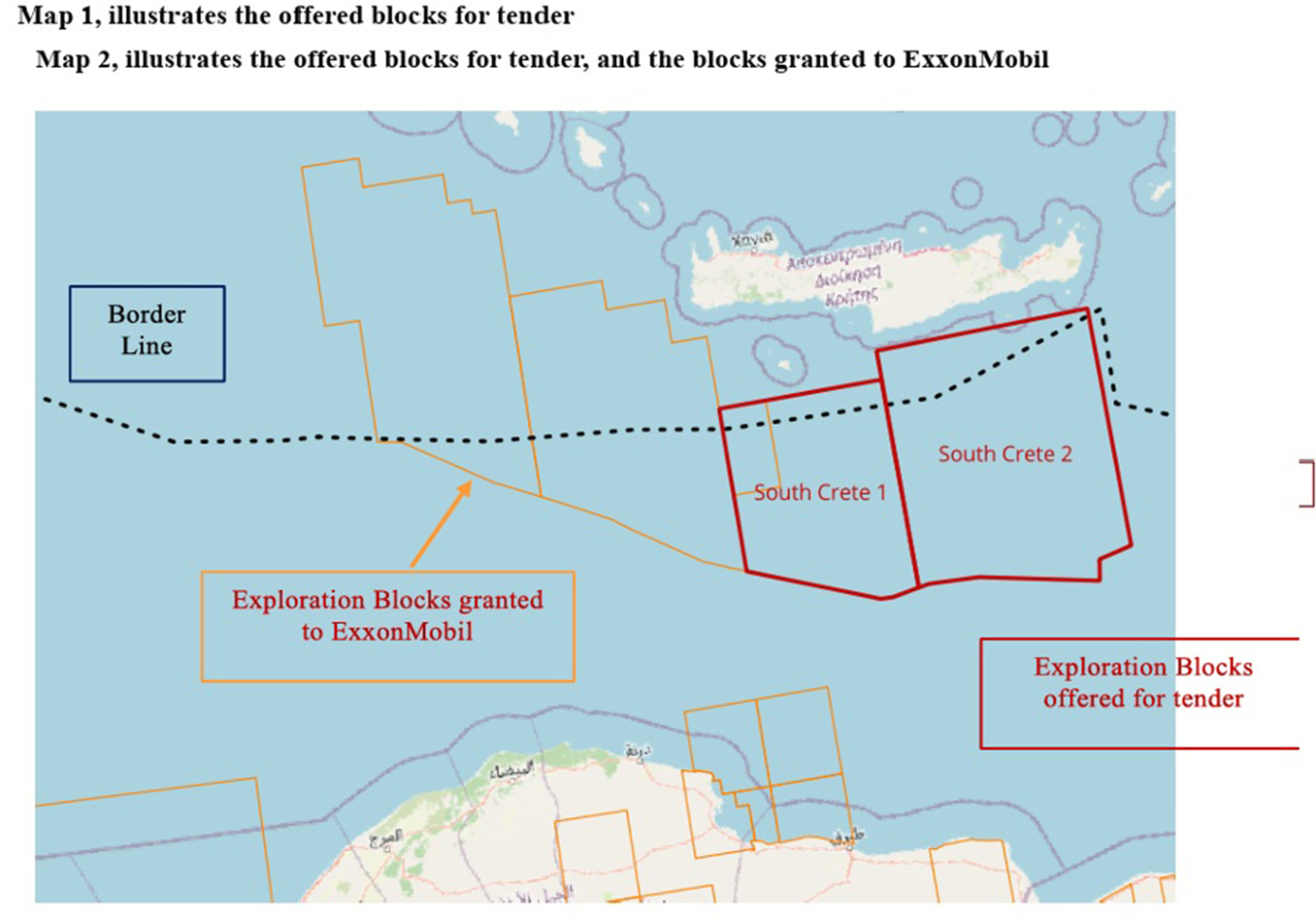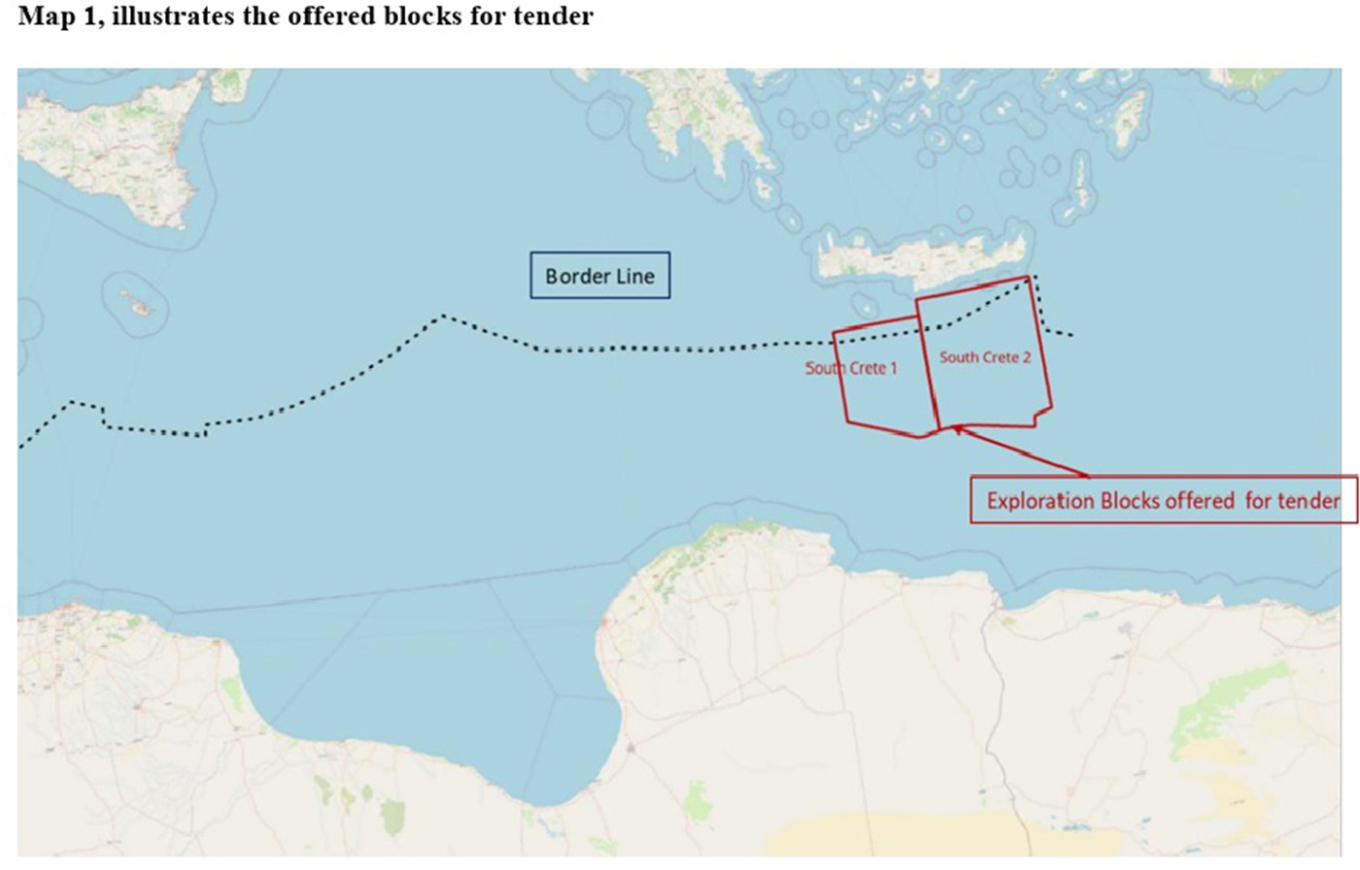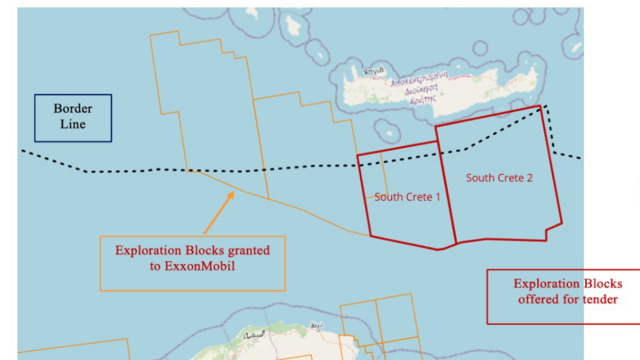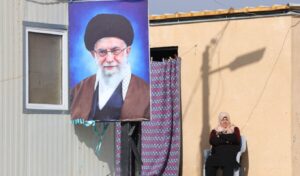Libya is directly challenging the median line established by Greece, upon which hydrocarbon exploration blocks have been delineated both west and south of Crete, through a verbal note submitted to the UN. This marks the first time that Libya has officially documented its claims against Greece through an official document, based on the Turkey-Libya Memorandum.
Libya challenges Greece’s median line with UN verbal note
The maps accompanying the verbal note show the delimitation line adopted by Libya as a continuation of the Turkey-Libya Memorandum, which essentially eliminates the Greek EEZ south of Crete. Although the text states that these areas constitute “the subject of an unresolved dispute” between the two countries, they are characterized as “Libyan maritime areas,” with Libya declaring that the Greek delimitation attempts to create fait accompli against its sovereign rights, which it does not accept.
Maps showing Libya’s delimitation line and the reduction of Greek EEZ


Libya’s accusation of international law violation by Greece
In the verbal note, Tripoli accuses Greece of serious violation of international law, particularly the UN Convention on the Law of the Sea, and calls on the international community to take action to avoid escalation and maintain peace in the Mediterranean. Meanwhile, Libya invokes the Turkey-Libya Memorandum, despite it being condemned as illegal and contrary to international law.
The report from the Libyan national oil corporation, accompanying the verbal note, notes violation of the delimitation line based on the Memorandum, thus presenting Libya’s claims.
The implications of Libya’s claim for the Greek EEZ south of Crete
Since 2019, when the Turkey-Libya Memorandum was signed, Turkey has mapped its “Blue Homeland,” while Libya has not declared its own EEZ. With the new communication, Libya presents for the first time with a map its claim, which significantly limits, even to the point of nullification, Greek influence south of Crete and the small islands.
The verbal note contradicts initial assessments in Athens that Libya accepts the Greek median line as defined by law 4001/2011. However, Tripoli states that the dispute must be resolved through dialogue and negotiations. The recognition of the existence of a dispute facilitates Athens’ effort to initiate negotiations, which if they fail, could lead to an appeal to the International Court of Justice in The Hague, which would also judge the legitimacy of the Turkey-Libya Memorandum.
Already, Foreign Minister Giorgos Gerapetritis has proposed to the Libyan side the establishment of technocratic groups to begin negotiations, while a similar proposal to the Tripoli government is being planned.
The Libyan verbal note to the UN and the annex
The Libyan verbal note to the UN and the annex with the NOC report is as follows:
Verbal note dated 20 June 2025 from the Permanent Mission of Libya to the United Nations to the Secretary-General
The Permanent Mission of the State of Libya to the United Nations has the honor to express the deep concern of the Government of National Unity regarding recent developments in the Eastern Mediterranean.
The Government learned with deep displeasure of the content of Issue No. 3335 of the Official Journal of the European Union, dated 12 June 2025 (see Annex II),* which states that the Hellenic Republic announced an international tender for granting exploration and exploitation licenses for hydrocarbons in maritime areas south of the island of Crete.
These areas fall within maritime zones that remain the subject of an unresolved dispute between Libya and Greece.
The Government of the State of Libya considers this action as a clear violation of its sovereign rights and as a unilateral action without any legal basis or bilateral agreement. It constitutes a serious violation of international law, particularly the provisions of the United Nations Convention on the Law of the Sea, and undermines the principles of mutual respect and peaceful settlement of disputes.
Consequently, Libya officially and categorically records its opposition to this initiative and calls for strict adherence to the principles enshrined in the Charter of the United Nations and relevant international legal instruments governing the peaceful settlement of maritime disputes.
Libya reaffirms its steadfast commitment to constructive dialogue and negotiation, and categorically rejects any attempt to impose fait accompli in areas where no legal agreement has been reached.
The Government calls on the international community – under the leadership of the United Nations – to fulfill its responsibility for maintaining peace and stability in the Mediterranean region and to discourage any action that could lead to escalation.
It is worth noting that this is not the first time that the Government of Greece has granted exploration licenses in areas within Libya’s maritime boundaries. Previous licenses were granted to the French company Total and the American ExxonMobil. The latter subsequently acquired Total’s share and proceeded with research activities, including 2D seismic survey in 2022 and 3D in 2024, followed by an announcement of intention for exploratory drilling.
In light of the above, the Permanent Mission of the State of Libya to the UN respectfully requests the circulation of this verbal note and its annexes as a document of the General Assembly, under item 75 of the agenda.
Annex I to the verbal note of 20 June 2025 from the Permanent Mission of Libya to the UN to the Secretary-General
Report of the National Oil Corporation regarding Greece’s offer for research plots in Libyan submerged waters
17 June 2025
• On 13 June 2025, the Government of Greece announced an international tender for granting exploration and exploitation licenses for hydrocarbons in specific offshore areas south of the Peloponnese and the island of Crete. This means that the 90-day deadline for submitting binding offers began from this date.
• This announcement comes after an expression of interest from Chevron in March 2025, for conducting hydrocarbon exploration in offshore areas south of Crete 1 and Crete 2 (map 1),* within the areas that had been defined in the 2014 international tender.
• Two of the announced areas, Crete 1 and Crete 2, are geographically located within Libyan maritime areas (over which the two countries maintain different claims). The total area of the two regions is 23,300 km² and over 85% of this area is located south of the delimitation line that separates Libya from its neighbor, Greece.
• It is worth noting that the Government of Greece has granted two plots within Libyan maritime boundaries to the companies Total and ExxonMobil (map 2).* ExxonMobil subsequently acquired Total’s share and proceeded with research activities, including 2D seismic survey in 2022 and 3D in 2024, while announcing intention to conduct exploratory drilling.




